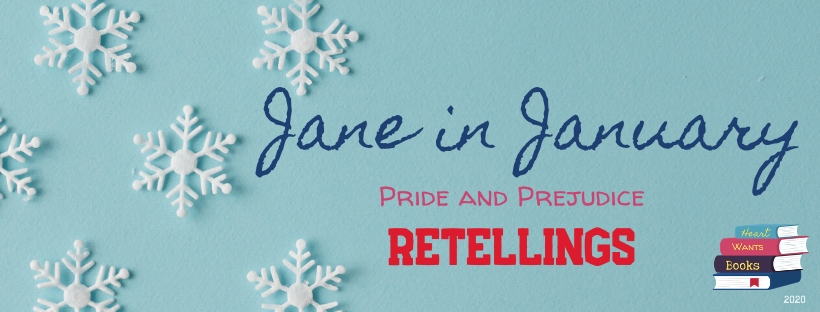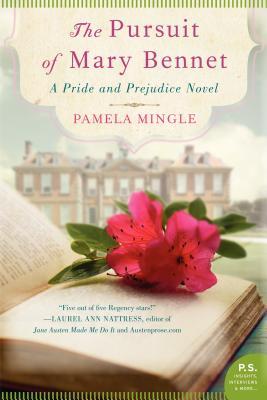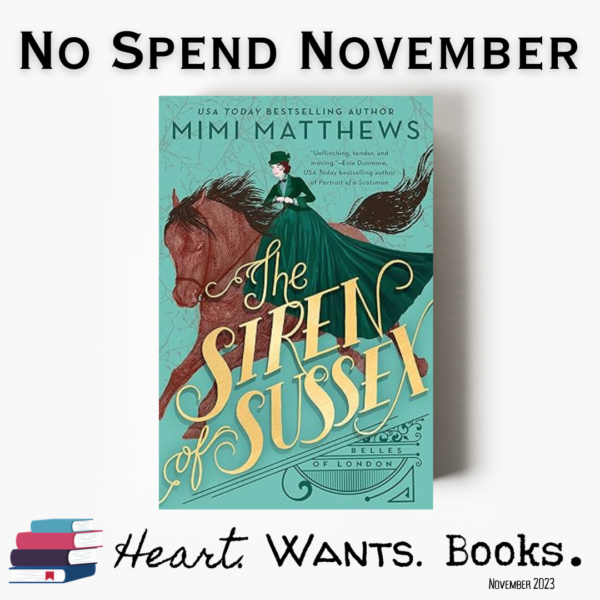P&P Adjacent – Set in the 19th Century January 16, 2020

For my part of Pride and Prejudice adjacent reading, I selected four titles to focus on and share with you, two sequels and two retellings but from different points of view. I did read (at least parts of) a couple more, but they didn’t rise to the level of any of these. All four of these titles are set in or close to the time of the original and were very enjoyable reads. Let’s look at them in order of publication.

Death Comes to Pemberley by P.D. James – Fast forward to six years after the end of Pride and Prejudice. Elizabeth and Darcy are settled at Pemberley, where she has found her footing, become close with Georgiana, and had two sons. Jane and Bingley live close by and Mr. Bennett visits often. Lydia and Wickham have gotten on, well, predictably. Elizabeth and all of Pemberley are preparing for the annual autumn ball, which Lydia decides she must attend, invitation or not. Wickham decides to bring her on his way through (as he is not welcome at Pemerley), and drama ensues in the form of a murder. Wickham appears the likely suspect, but Darcy doesn’t believe it. The rest of the tale is spent exploring what actually happened, the court proceedings, and how this cast of characters handles this chaos that rode in with the Wickhams in their carriage.
What this book is and is not – it is a well-crafted crime story that captures the characters from Austen’s original work. It might seem to be a sequel, which I guess it is, but only sort of because the style of the book is very different. It might still be a statement on society and a chronicle of character development, but it’s also a crime drama and what little romance is a complete aside.
I liked this book, but I didn’t love it, certainly not enough to be likely to reread it. The PBS adaptation is also really enjoyable (I did see it first, and a year or two prior to reading the book). I didn’t love the casting (Matthew Rhys doesn’t do it for me as Darcy, but I love Anna Maxwell Martin as Elizabeth), but the acting was great. If you are a purist, skip this book. It’s a fun look at these lovely characters through a very different lense, and while I enjoyed it, it is not for everyone.

Mr. Darcy’s Diary (Jane Austen Heroes #1) by Amanda Grange – This is literally the timeline of Pride and Prejudice as read in Mr. Darcy’s Diary. He recounts events in the book and events during that time that happen (or could have happened) during his time away from Elizabeth. Much of the dialogue seems to be lifted straight from the original (I read it about a week after the original, but I did not do a side-by-side comparison), so it feels very much the same story, just from Darcy’s perspective. It’s fun, revealing, and even creative at times with the pieces we don’t see in the original simply because Elizabeth doesn’t see them. If you’re interested in deep diving Pride and Prejudice, I highly suggest this as a title to include. I adore the way Mr. Darcy’s character is slowly revealed in the original and this book adds more layers to that in a lovely way.
I’m not a purist, but I think it’d be worth getting several pages into the text for a purist to see if this title works for them. I really enjoyed it and may reread this in the future, perhaps while watching one of my favorite movie adaptations (because yes, I am that person and I may or may not be catching up on The Crown while writing this).
I would be remiss without mentioning, if you read and enjoy Mr. Darcy’s Diary, it is one in a series of six. Yes, that does mean Grange has written a diary for each of Austen’s major novel heroes. I haven’t read any of the others, but I have recommended them to my library. Grange also has other titles that are retellings or sequels to Pride and Prejudice. If you have read any of her works, please share your thoughts with us in the comments. I wouldn’t mind diving deeper, especially if you have titles to share!

Longbourn by Jo Baker – This is another take on the story but from a different perspective. I read this about a month later and didn’t look back, so I cannot comment on the accuracy of events and conversations that also occur in the original. That said, this is the downstairs version of Pride and Prejudice – both in that it is the story from the view of one of the housemaids and in that she has her own instance of misjudging someone in the pages of this book. As the book opens, Sarah overhears conversations about a new resident at Netherfield and learns of all the work to come, and this on laundry day. (I don’t hate laundry day nearly as much as I did before reading this. I much prefer my methods with electricity and machines to help. And no, I have no idea if the methods are historically accurate, but if you do, please enlighten us in the comments.) Soon the staff learn that Mr. Bennett has hired a footman to work in the house to lighten the work and, much to Mrs. Bennett’s delight, make the house seem more respectable by having men wait on the residents and guests rather than just women (yes, that sound was me rolling my eyes at Mrs. Bennett, again).
The book is organized in three volumes. One and two are continuations of the story, then three abruptly takes you back in time to learn about one character’s backstory. Once we’re caught up, we even see some earlier events of this book from a different perspective. While the ending is delightful and I adore the way Sarah’s character develops throughout the book, I wanted an epilogue because I want to know what happens after the end. I like the endings of books to be tied up in nice, neat bows, even if that means I need a novella after the official “ending.” Unfortunately, this is normal for me, and is my chief complaint about Austen’s Pride and Prejudice as well.
While I really enjoyed this book, and will likely reread it eventually. Austen purists may not enjoy this, especially given how some facts turnout in the book. We learn more about some of our beloved characters, and not all of it is nice, but the folks downstairs best know those they take care of, so take that under advisement, dear reader. I thoroughly enjoyed the new perspective in the first two volumes, and was excited by the mysteries being revealed during the third (after I figured out what was going on – that transition could have been smoother). I didn’t agree with everything our dear characters did and said, but I don’t have plans to write a book, so I must satisfy myself with how others write them for me to enjoy. The style of this is a blend of the original and a bit of a mystery as to the backstory of one character, how it affects the rest, and then how we’ll get resolution for our heroine and her hero. While some may claim this is a romance, and there is definitely that aspect to it, it feels more like a coming of age tale to me. Sarah realizes the impact of the ladies of the house growing up through doing the laundry, then preparations for callers, and finally the ladies getting married and going to homes of their own. She also grows up enough to realize she has choices and can direct her own life rather than just doing as she is told, even by those who employ her.

The Pursuit of Mary Bennett by Pamela Mingle – This novel shows us how Mary Bennett’s life is changed after the marriages of her three sisters, and covers a similar timeline to Death Comes to Pemberely. Jane and Lizzie work hard to shield Mary (and Mr. Bennett for that matter) from Lydia and Mrs. Bennett and to help Mary come into her own. She was always the wallflower to Kitty and Lydia’s questionable behavior which placed a shadow on the proper Jane and Lizzie. We, and Mary, stay predominantly with Lizzie and Darcy, learning about their family, household, and what has happened with them in the years since the end of Pride and Prejudice. Through the purposeful influence of her elder sisters, Mary has the instruction and also the freedom to become her own person and step into the light as the eldest unmarried Miss Bennett. We still get the drama that is Lydia and Wickham, but we are insulated from it a bit because Lizzie wants to keep Mary separated from the scandals that follow Lydia. And we also get to see how Mary benefits from the superb matches of her elder sisters, despite the less advantageous marriage of her youngest sister. As someone who always wants to know more at the end of the story, I adored this book. It was written with a more modern pace, yet kept a voice similar to the original. It continues the story in the pseudo-lighthearted way of the original and is a delightful addition to my deep dive.
Have you read any of these novels? Or any other Pride and Prejudice adjacent books set in the 19th century?
Next week, we’ll bring you a post about modern retellings and one about film adaptations, so check back, and keep reading (and watching)!
~Nikki





